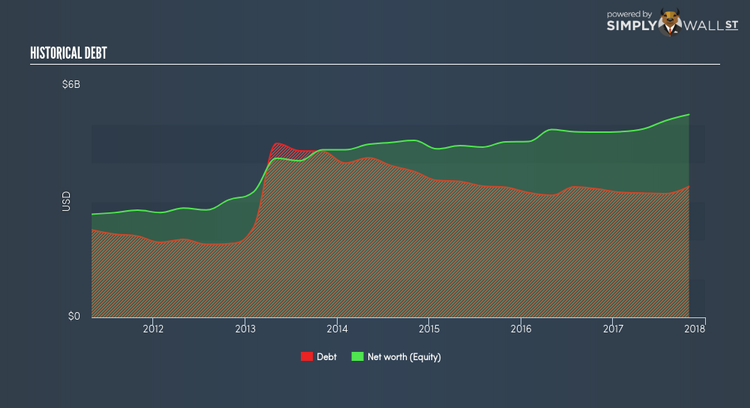What Investors Should Know About PVH Corp’s (NYSE:PVH) Financial Strength

PVH Corp (NYSE:PVH), a large-cap worth US$11.17B, comes to mind for investors seeking a strong and reliable stock investment. Big corporations are much sought after by risk-averse investors who find diversified revenue streams and strong capital returns attractive. However, the key to extending previous success is in the health of the company’s financials. I will provide an overview of PVH’s financial liquidity and leverage to give you an idea of PVH’s position to take advantage of potential acquisitions or comfortably endure future downturns. Remember this is a very top-level look that focuses exclusively on financial health, so I recommend a deeper analysis into PVH here. View our latest analysis for PVH
How much cash does PVH generate through its operations?
PVH has sustained its debt level by about US$3.24B over the last 12 months made up of current and long term debt. At this stable level of debt, the current cash and short-term investment levels stands at US$730.10M , ready to deploy into the business. Moreover, PVH has generated cash from operations of US$954.80M in the last twelve months, leading to an operating cash to total debt ratio of 29.47%, meaning that PVH’s operating cash is sufficient to cover its debt. This ratio can also be a sign of operational efficiency as an alternative to return on assets. In PVH’s case, it is able to generate 0.29x cash from its debt capital.
Can PVH pay its short-term liabilities?
At the current liabilities level of US$1.56B liabilities, it appears that the company has maintained a safe level of current assets to meet its obligations, with the current ratio last standing at 1.84x. Generally, for Luxury companies, this is a reasonable ratio since there is a bit of a cash buffer without leaving too much capital in a low-return environment.
Does PVH face the risk of succumbing to its debt-load?
PVH is a relatively highly levered company with a debt-to-equity of 64.55%. This isn’t uncommon for large companies because interest payments on debt are tax deductible, meaning debt can be a cheaper source of capital than equity. Accordingly, large companies often have lower cost of capital due to easily obtained financing, providing an advantage over smaller companies. By measuring how many times PVH’s earnings can cover interest payments, we can evaluate whether its level of debt is sustainable or not. As a rule of thumb, a company should have earnings before interest and tax (EBIT) of at least three times the size of net interest. For PVH, the ratio of 6.94x suggests that interest is appropriately covered. High interest coverage serves as an indication of the safety of a company, which highlights why many large organisations like PVH are considered a risk-averse investment.
Next Steps:
Although PVH’s debt level is towards the higher end of the spectrum, its cash flow coverage seems adequate to meet obligations which means its debt is being efficiently utilised. Since there is also no concerns around PVH’s liquidity needs, this may be its optimal capital structure for the time being. I admit this is a fairly basic analysis for PVH’s financial health. Other important fundamentals need to be considered alongside. You should continue to research PVH to get a more holistic view of the large-cap by looking at:
Future Outlook: What are well-informed industry analysts predicting for PVH’s future growth? Take a look at our free research report of analyst consensus for PVH’s outlook.
Valuation: What is PVH worth today? Is the stock undervalued, even when its growth outlook is factored into its intrinsic value? The intrinsic value infographic in our free research report helps visualize whether PVH is currently mispriced by the market.
Other High-Performing Stocks: Are there other stocks that provide better prospects with proven track records? Explore our free list of these great stocks here.
To help readers see pass the short term volatility of the financial market, we aim to bring you a long-term focused research analysis purely driven by fundamental data. Note that our analysis does not factor in the latest price sensitive company announcements.
The author is an independent contributor and at the time of publication had no position in the stocks mentioned.

